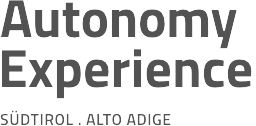
It is said that man is a political animal, yet as life in all its facets becomes clear, the economic dimension of human existence can hardly be underestimated. In the discourse on minorities, the focus thus far has been primarily on the question of how to ensure their political participation in society (→ Participation). However, of no less importance is the question of how to bring minorities into society’s economic cycle. In fact, the Council of Europe’s Framework Convention for the Protection of National Minorities (→ Organisations) recognises this fact and requires that each state fosters in all areas of economic, social, political and cultural life, full and effective equality between persons belonging to a national minority and those belonging to the majority” (Article 4). They must thus create the necessary conditions to enable minority participation “in cultural, social and economic life” (Article 15). Of course, participation in social life is more difficult to measure than in political life: there are no clear indexes, such as the number of minorities in parliament as an indicator of political representation.
The Macro-Dimension: Social Inclusion and Employment Policy in the EU

Photo: Adobe Stock/Fokussiert
Increasingly, the question of who is and who is not integrated into the European societies and their economic cycles is a pan-European issue. For this reason, in March 2000 the heads of state and government proposed the (perhaps overly) earnest and promising ”Lisbon strategy”, the stated aims of which were to make the EU the most competitive economy in the world and to achieve full employment by 2010. Most of its proposals were clearly outside the legislative competences of the EU, falling instead to the Member States. To correct this conundrum of an EU strategy outside EU competence, a new, “soft” means of quasi-governmental action was created: the so-called Open Method of Coordination (OMC), which allows the EU (in this case the Commission and Council) to set goals for the Member States. While non-binding, Member States must work out “action plans” stating how they intend to achieve the goals. The EU has since issued and implemented such plans on a regular basis, establishing an official European dialogue and an exchange of best practices within which means of combating social exclusion and assisting the most vulnerable individuals are amongst the priorities.
The EU Commission was rather sceptical as to whether the Member States would invest sufficient energy into the political integration of minorities. It calls for “concerted drive to reduce the levels of poverty and social exclusion and to increase the labour market participation of immigrants and ethnic minorities to the same levels as the majority population”. Most countries, as the Commission put it, “continue to present the issue of immigrants and ethnic minorities in rather general terms”. In many cases, they only briefly mention vulnerable immigrants and ethnic groups in their reports, “with little attempt to analyse their situation or factors which lead to exclusion and poverty” (from the Commission’s second progress report, 2004). There remains a need for measures to prevent potentially discriminatory behaviour, attitudes and practices on the part of the majority population. Such measures could prevent immigrants from not receiving adequate access to employment, service and training courses despite adequate language ability (→ Discrimination). The political discourse should address the contribution of foreigners and immigrants to economic prosperity and cultural diversity in each country (→ Media).
In addition to social inclusion policy, the EU Open Method of Coordination has been applied in the field of European employment policy. As early as 1999, the first so-called “employment guidelines” made explicit reference to minorities. The goal is an open labour market for everyone. Therefore, Member States should give “special attention to the needs of the disabled, ethnic minorities and other groups and individuals who may be disadvantaged, and develop appropriate forms of preventive and active policies to promote their integration into the labour market”. Naturally, this sounds easier than it is in practice. A major problem for input in policy-making is the lack of comparable data describing the extent or the nature of ethnic minorities’ needs. Such data would also be essential in seriously evaluating the relevant policies that do exist: The Commission found that only the United Kingdom and the Netherlands collect complete data on ethnic minorities. In addition to the drastic shortage of data on ethnic minorities in this context, the problem of definition arose once again: The term ethnic minority (as regards employment policy) is defined very differently by each Member State. For example, the United Kingdom and the Netherlands offer the generous definition “visible minorities” while such nations as Sweden and Germany limit the expression to foreigners and non-EU citizens. Others like Ireland, Finland and Austria address specific national minorities (→ What is a “Minority”?).
This diversity leaves the collected data appear less than comparable, which is precisely why the call for coordinated and comprehensive data collection is appropriate. At the EU level, although socio-economic criteria addressing social inclusion and poverty as specifically and meaningfully as possible do exist, the data collected under the current 14 criteria (e.g. long-term unemployment rate, drop-out rate, people living in unemployment-affected households, percentage of adults with low education levels, percentage of young people with dyslexia), are broken down to gender and age, but not ethnicity. Consideration of the ethnic dimension in data collection on the subjects of social inclusion and the labour market is therefore a frequent demand in the field of EU policy.
In early 2006, the EU Commission appointed an independent “High Level Group of Experts on the Social Integration of Ethnic Minorities and their Full Participation in the Labour Market”. This eleven-member panel, chaired by former German Bundestag President Rita Süssmuth, presented a report in December 2007 that identified 14 obstacles hindering the integration of ethnic minorities in the labour market. This includes lack of qualifications as well as the fact that foreign professional qualifications are not recognized in the EU Member States, lack of access to education and training, bureaucratic barriers, disincentives through welfare systems, and stereotypes, prejudice and discrimination. Süssmuth stresses that a holistic, multidimensional approach is necessary. She underlines that there is an urgent need for more data on the ways in which discrimination, cultural factors and social disadvantage interact with each other. Policy makers on local, regional, national and European level will have to continue examining these issues while drawing on the knowledge and experience of experts from various areas of society.
Minorities and the Micro Level: So-called “Diversity Management”

Photo: Unsplash/Aarón Blanco Tejedor
Particularly in the United States, the catchphrase “diversity management” has made a career for itself. It describes a management strategy that sees the diversity within a company’s workforce as promoting its positive potential, specifically for enhancing overall efficiency. The theory is characterized by some grey areas. For instance, the question of defining diversity is answered in various ways. It is potentially just as multi-faceted as the debate over equality (→ Discrimination). Differences on this subject sometimes distinguish between primary and secondary characteristics: The former are unalterable, such as gender, ethnicity, physical abilities or disabilities, sexual orientation, and age. Secondary differences are variable, such as income, education level, parental duty, religion, language skills, and family status. This already shows that the diversity management extends far beyond the treatment of ethnic minorities. Significantly, the theory looks for diversity management not as a method of protection, but as a management technique that provides companies greater efficiency and better economic returns. The “benefit” of diversity management is seen in its ability to promote otherwise hidden talents; to create a winning marketing image; to attract new customer groups; and to activate new synergies through cooperative management of internal diversity. This also has the beneficial effect of preventing the losses incurred by a high rate of discrimination – loss of morale, expensive litigation and government sanctions (→ Discrimination).
Concretely, this means, diversity considerations in hiring, training programs on intercultural communication, and generally a management style that improves the working environment significantly through intercultural sensitivity – for example, through flexible rules regarding appropriate workplace attire, the establishing of religious prayer rooms, handicapped-accessible office equipment, and multilingual corporate policy. Criticism of the approach cites contradictory studies that fail to consistently demonstrate statistically and empirically that diversity actually enhances corporate performance. It has been pointed out that there are also examples of diversity complicating and hindering decision-making. In fact, there is little point in labelling diversity as “better” with do-gooder airs and graces. Above-average diversity within a company can have both positive and negative effects. Which scenario occurs depends largely on how great the variety is, what kind of diversity one is dealing with (e.g.: diversity of skills or of beliefs), and in particular, the context in which a company operates. In different sectors (e.g. production vs. communication), diversity will have different effects for obvious reasons: in one case, diversity may be reflected in creativity, flexibility and efficiency, while in another, its advantages are outweighed by drawbacks such as friction or errors in communication. But anyone who thinks that the subject of diversity management is off the table because of these arguments is wrong. In practice, diversity management is not used to decide whether more or less diversity is good or bad for a business: It’s about using the existing degree of diversity within a company as an advantage rather than suffering from it as a disadvantage. This shows that diversity management in the business field is not only of benefit for minorities, but contributes to the overall collective good as well – an insight that also holds true for the broader context of society (→ Yin and Yang).
Economic Crisis and Minorities

Photo: Unsplash/Markus Winkler
The recent and persistent crisis brought about a 4 percent reduction in European economic performance during the year 2009, and unemployment increased further in 2010, to more than 11 percent. The EU statistics office estimates that in July 2009, nearly 22 million people in the EU were unemployed (9%). The highest rates were recorded in Spain (18.5%), Latvia (17.4%) and Lithuania (16.7%); the Baltic States suffered an especially dramatic increase – there, the unemployment level jumped by a good 10 percent in barely a year. The dramatic consequences are literally life-threatening: Latvia has reported that doctors in hospitals are confronted with new emergency symptoms, because people shy away from seeking medical attention until the very last moment. Whereas the unemployment figures in the Baltic states recently showed a slight decrease, they were rocketing in other countries: at the beginning of 2012 Spain reached an unemployment rate of around 23 percent and Greece stood at around 19 percent. It is not surprising that the impact of the economic crisis is asymmetrical – not everyone is affected equally. As early as 2008, a number of international organizations and NGOs highlighted that the poorly educated, low-wage sector (such as the construction or industrial sectors) would be hit particularly hard. These sectors include many people from immigrant backgrounds (→ Kaleidoscope of Demographic Change). Moreover, in times of economic scarcity of resources, the climate of fear of perceived or real “strangers” intensifies greatly, a situation which is, sadly, exploited by populist parties. The aggression-prone danger of such scapegoating syndromes was collectively highlighted in March 2009 by the OSCE’s Office for Democracy and Human Rights, the Council of Europe Commission for Human Rights and the Fundamental Rights Agency of the EU (→ Organisations). Recently, this scapegoating has escalated to actual racist attacks: In Great Britain, it has been reported that Polish immigrant workers are increasingly the victims of aggression, while in Northern Ireland in the summer of 2009, some 100 Roma were attacked, eventually finding refuge in a church (→ Roma). Similar attacks took place in Romania in autumn 2009. The situation in Hungary appear as almost notorious: radical ideas are held openly (such as the recently forbidden but nonetheless active “Hungarian Guard”) and members of the Roma community are targeted and killed in fire and bomb attacks with tragic regularity (→ Xenophobia).
Three take aways:
- A society that allows everyone participation must be open not only to the participation of minorities in its political, but also the cultural,socialand economic life. The issue of social inclusion, such as in the economic cycle, is primarily the responsibility of the Member State. Nevertheless, the EU is now working in this field through the continuous exchange of experience and “best practices”. It would be helpful if data were collected and broken down by, for instance, ethnicity in order to evaluate policy measures and thus improve efficacy and targeting.
- From a macroeconomic perspective, many obstacles remain, such as diminished access to education, stereotypes,discriminationand deficits in language skills, which all hinder the participation of minorities in economic life. From a microeconomic point of view, “diversity management” shows how even when ethnic and cultural diversity are not of direct economic advantage, a company can nevertheless benefit from best use of its existing diversity.
- The current economic crisis particularly affects ill-trained workers, many of whom belong to minorities. Furthermore, the crisis has provoked scapegoating, providing a dangerous breeding ground for xenophobia and racism.
